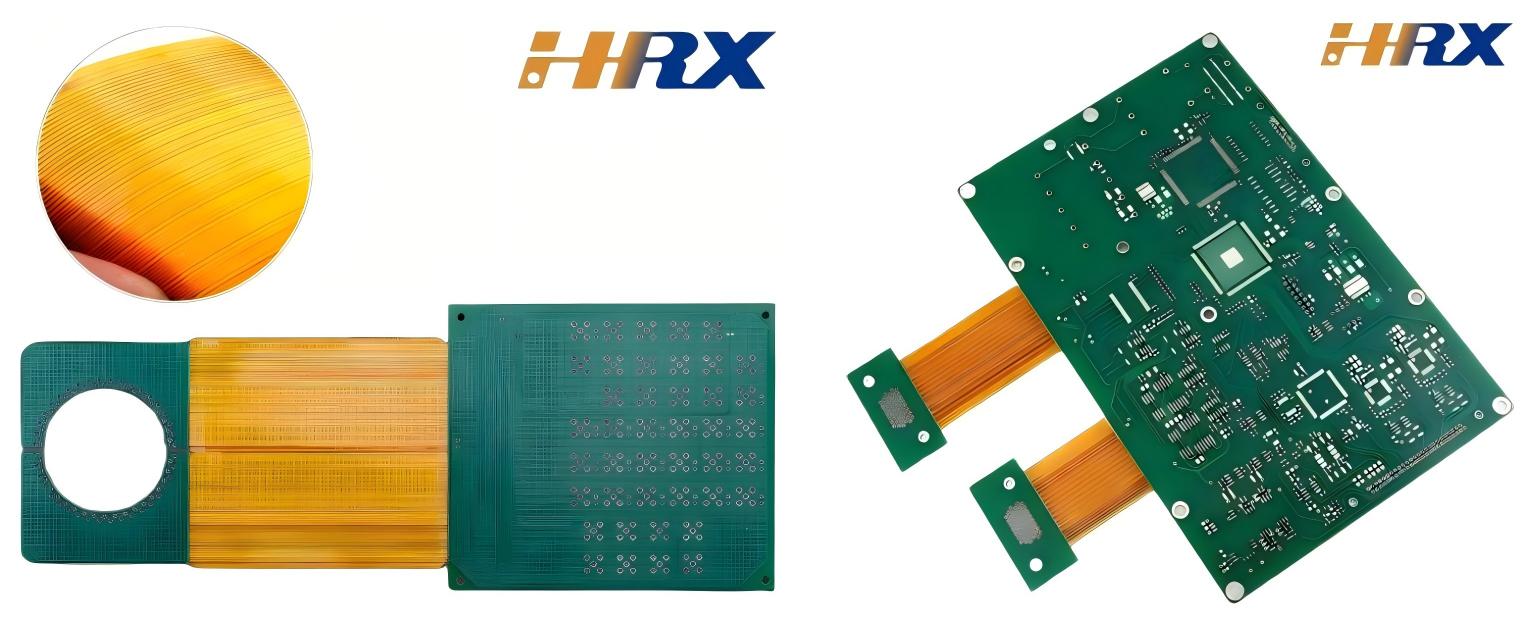Search
Why Lamination Technology Is a Cornerstone of FPC/PCB Manufacturing
- Nov 10,2025
-
Share
Lamination Technology serves as the backbone of high-performance Flexible Printed Circuits (FPC), Printed Circuit Boards (PCB), and rigid-flex combined boards. It involves bonding multiple layers—including copper foils, dielectric materials (e.g., polyimide, FR-4), and prepregs—under precise temperature, pressure, and time conditions. For ODM/OEM manufacturers like Shenzhen Huaruixin Electronics Co., Ltd., mastering lamination is non-negotiable: it directly impacts circuit reliability, signal integrity, mechanical flexibility (for FPC), and resistance to environmental stress (e.g., thermal cycling, humidity).

Key Critical Considerations to Avoid Production Defects
To ensure consistent quality and avoid costly reworks, manufacturers must prioritize the following technical focal points:
1. Material Compatibility & Selection
Prepreg-Copper Foil Matching: Choose prepregs (e.g., epoxy-based, polyimide-based) with compatible resin systems to the base material (FPC’s polyimide film or PCB’s FR-4 core). Mismatched materials cause poor adhesion, delamination, or resin overflow.
Dielectric Thickness Control: For FPC rigid-flex boards, balance dielectric layer thickness to maintain flexibility in flexible regions while ensuring rigidity in rigid sections—avoid over-lamination that compromises bendability.
Moisture Content Management: Pre-bake materials (especially prepregs and polyimide films) to eliminate moisture before lamination. Moisture trapped between layers leads to voids, bubbles, or popcorning during subsequent processes (e.g., soldering).
2. Precise Process Parameter Calibration
Temperature Ramp Rate & Holding Time: Gradual heating (2–5°C/min) prevents thermal shock; hold at peak temperature (170–220°C, depending on material) to ensure full resin curing. Overheating degrades polyimide, while under-curing causes weak interlayer bonding.
Uniform Pressure Application: Maintain consistent pressure (150–300 psi) across the lamination press. Uneven pressure results in uneven resin flow, thin spots in copper layers, or localized delamination—critical for high-density FPCs with fine-pitch traces.
Vacuum Degassing Optimization: Use vacuum lamination (vacuum level <10 torr) to remove air pockets. Inadequate degassing is the leading cause of voids in rigid-flex board lamination, affecting electrical performance.
3. Interlayer Alignment Accuracy
Registration Tolerance Control: For multi-layer FPC/PCB, align layers within ±0.05mm using precision tooling (e.g., pin alignment, optical registration). Misalignment in rigid-flex boards disrupts via connections between rigid and flexible regions, leading to open circuits.
Flex-Rigid Transition Zone Protection: In rigid-flex lamination, reinforce transition areas with controlled resin flow to avoid cracking or separation under repeated bending.
4. Resin Flow & Residue Management
Prepreg Cutting Precision: Trim prepregs to exact dimensions to prevent excess resin from overflowing onto circuit pads or solder masks—residue causes poor solderability and assembly failures.
Release Film Application: Use high-temperature release films to prevent resin adhesion to press plates, ensuring clean lamination surfaces and reducing post-process cleaning.
5. Thermal Stress Mitigation
Cooling Rate Control: Cool laminated boards gradually (1–3°C/min) to minimize thermal stress. Rapid cooling induces warpage, especially in rigid-flex boards with mismatched thermal expansion coefficients (CTE) between FR-4 and polyimide.
Post-Lamination Curing: For high-reliability applications (e.g., automotive, aerospace FPCs), conduct post-cure annealing to enhance resin cross-linking and improve long-term stability.
Shenzhen Huaruixin Electronics: Your Trusted ODM/OEM Partner for Lamination Excellence
As a global ODM/OEM manufacturer specializing in FPC, PCB, and rigid-flex combined boards, Shenzhen Huaruixin Electronics Co., Ltd. leverages decades of lamination expertise to deliver defect-free, high-performance solutions. Our state-of-the-art lamination facilities (including vacuum press machines, precision alignment systems, and material pre-treatment equipment) ensure compliance with IPC standards and customer-specific requirements—from consumer electronics to industrial control systems.
Need a Reliable FPC/PCB Manufacturing Partner? Contact Us Today!
If you have project requirements for FPC, PCB, or rigid-flex boards—whether prototype or mass production—our team of engineers is ready to support your design, lamination, and full-scale manufacturing needs.
For more industry insights, technical resources, or to request a quote:
Visit our website: www.hrxfpc.com
Email us: sales@hrxfpc.com
Let’s collaborate, share knowledge, and drive innovation in FPC/PCB lamination technology!

Let’s talk! We’ll provide the perfect solution for you!
-
 Huaruixin Electronics mainly produces printed circuit boards as the core business, to provide customers with one-stop solutions for FPC/PCB production, components sourcing and Assembly.
Huaruixin Electronics mainly produces printed circuit boards as the core business, to provide customers with one-stop solutions for FPC/PCB production, components sourcing and Assembly. - WHAT WE DO — PCB Design Solutions — Flex PCB Production — Components Sourcing — FPC&PCB Assembly
- PRODUCTS — Single Sided Flexible Circuits — Double Sided Flexible Circuits — Multilayer Flexible Cirucits — Rigid-Flex Circuits — FPC Assembly — PCB Assembly
- CAPABILITY — FPC Capability — Rigid-Flex Capability — PCB Capability — Assembly Capability
- Copyright © 2024 Shenzhen Huaruixin Electronics Co., Ltd. All Rights Reserved.
- Design By BONTOP


